Many thanks for the provided lens SIRUI 35mm F1.8 Anamorphic 1.33X (MFT + Sony E) SIRUI company.
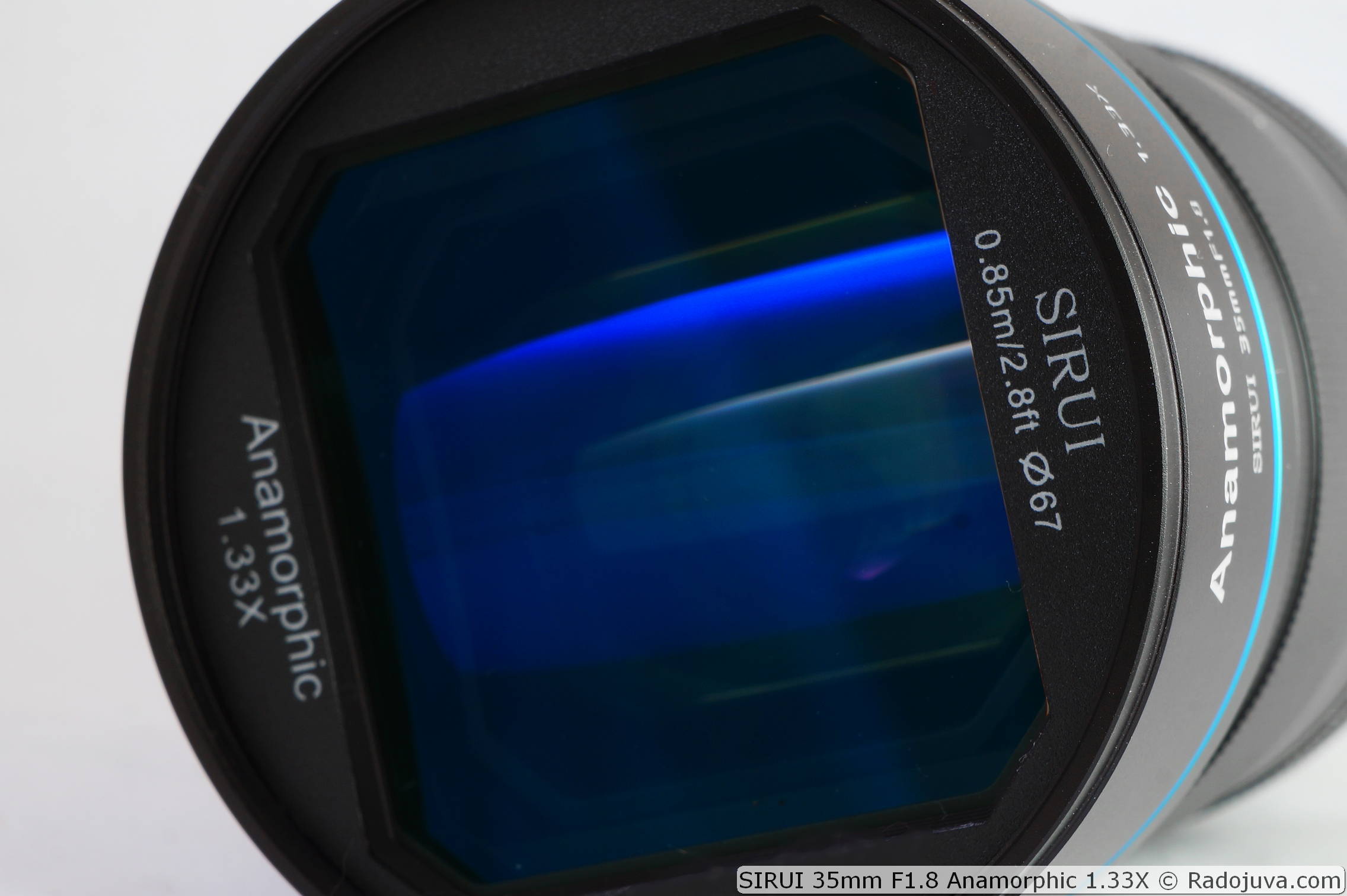
SIRUI 35mm F1.8 Anamorphic 1.33X. increase.
Navigation
- In short
- Main Specifications
- Assembly
- Focusing
- Image quality
- Sample Photos
- My experience
- Price
- Video review
- Results
- User Comments
- Add your review or question on the lens
In this review, I will abbreviate the SIRUI 35mm F1.8 Anamorphic 1.33X lens SIRUI 1.33X 35/1.8.
Very important: SIRUI 1.33X 35 / 1.8 lens initially comes with a mount for the Micro 4/3 system (aka MFT - Micro Four Thirds). But for SIRUI 1.33X 35 / 1.8, original interchangeable metal adapters are sold, which make it possible to use the lens on cameras with an APS-C sensor and mounts Sony E, Nikon Z, Canon EF-M, Canon RF, Leica l, fujifilm x. I was provided with a replacement adapter/mount for Sony E, it was very easily and quickly installed on the lens (view).
In short
SIRUI 1.33X 35/1.8 is a modern anamorphic lens for mirrorless cameras with APS-C (Kf=1.5X) and Micro 4/3 (Kf=2X) sensors. Only manual focus and manual iris control. Anamorphic ratio 1.33X.
SIRUI 1.33X 35/1.8 is interesting for its low cost, very high quality assembly, and good image quality. SIRUI 1.33X 35/1.8 makes it as easy and cheap as possible to touch the 'magic' of the anamorphic widescreen format.
Using such a lens, it is easy to transform the image from common modern digital cameras that shoot with an aspect ratio 16:9 (aka 1.78:1) to widescreen aspect ratio 2.4:1. A ratio of 2.4:1 is considered a classic ratio for cinema. Typically, this ratio is achieved precisely with the help of an anamorphic lens, as a result of which an anamorphic widescreen image is obtained.
Many modern amateur and professional photo and video cameras shoot with a very common aspect ratio of 16: 9, this is the aspect ratio of popular modern formats:
- 4320p(8K): 7680X4320
- 2160p(4K): 3840X2160
- 1440p(2K): 2560X1440
- 1080p(Full HD): 1920X1080
- 720p(HD): 1280X720
- 360p(SD): 640X360
It is convenient to work with such formats, since in order to achieve a ratio of 2.4:1, it is enough to use an anamorphic lens with a small anamorphic ratio, which is only 1.33X.
Interestingly: Another good use of the lens is shooting in HDV 1080i with frame size 1440 X 1080 pixels (proportions 4:3), which is anamorphic Full HD. For example, most cameras Sony E with APS-C sensor support such a shooting mode, after applying digital deanamorphization, Full HD 1920 X 1080 is obtained. HDV 1080i mode is used approximately 90% sensor area APS-C, and the final result is the more popular Full HD 1920 X 1080, while the final deanamorphic frame has that same 'cherished cinematic character'.
Interesting 2: SIRUI 1.33X 35 / 1.8 is also suitable for photography, it is originally an anamorphic photo lens. When shooting on cameras with a sensor APS-C, which use frame aspect ratio 3:2, after digital deanamorphization, a picture with frame proportions is obtained 2:1, which can be effectively used, for example, during the creation of certain types of panoramas. The same applies to shooting on cameras with an MFT sensor, which use frame proportions. 4:3, after digital deanamorphization, a picture with aspect ratio of 16:9 is obtained.
Main Specifications of SIRUI 35mm F1.8 Anamorphic 1.33X:
| Review Instance Name | Body: SIRUI 35mm F1.8 Anamorphic 1.33X
Near front lens: SIRUI 0.85m/2.8ft ⌀67 Anamorphic 1.33X Mount side 'MFT-Mount' or 'E-Mount' |
| Basic properties |
|
| Front Filter Diameter | 67 mm |
| Focal length | 35 mm
EGF vertically:
taking into account horizontal anamorphism: |
| Zoom ratio | 1 X (this is a fixed lens, it does not have a zoom) |
| Designed by | Option from the review for cropped mirrorless cameras Micro 4/3.
You can install mounts (1 to choose at the time of purchase):
|
| Number of aperture blades | 10 rounded petals |
| Tags |
|
| Diaphragm | from F / 1.8 to F / 16, controlled using the aperture control ring. There are marks for F / 1.8, 2, 2.8, 4, 5.6, 8, 11 (dot only), 16. The ring rotates smoothly. |
| MDF | 0.85 meters, maximum magnification factor approx. 1:10.63 vertical and 1:13.83 horizontal |
| The weight |
|
| Optical design | 13 elements in 9 groups, diagram drawing not found |
| Lens hood | Must be screwed into the front filter thread; marking unknown |
| Manufacturer country | Made in China (there is no data on the country of manufacture on the lens itself) |
| Period | С July 7 2020 |
| Price |
The light transmission of the lens is at the level of T / 2-T / 2.1. I compared SIRUI 1.33X 35/1.8 with lens Carl Zeiss Planar 1,4/50 ZF.2 T*, which at an aperture value of F / 1.4 gives a light transmission of T / 1.5. exposure in the central area of the frame with SIRUI 1.33X 35 / 1.8 at an aperture value of F / 1.8 exactly 2 times lower than Exposition with Carl Zeiss Planar 1,4/50 ZF.2 T* at F/1.4.
Assembly
The original white box is in another extra shipping box. The lens is delivered in a vacuum sealed film, a fabric case, instructions, an interchangeable bayonet mount and two gear rings are included. The front cover is plastic, branded, with latches. The back cover is plastic, ordinary.
In general, the lens is assembled very well. SIRUI 1.33X 35/1.8 has bayonet mount metal The lens body is completely made of metal, aircraft-grade aluminum is used.
The weight of the SIRUI 1.33X 35/1.8 lens itself is almost exactly 700 grams. In the hands of the lens feels like a good, professional product.
The filter diameter is 67 mm, almost all lenses in this series use this front filter diameter.
The marks on the lens are engraved and filled with paint.
The design of SIRUI 1.33X 35/1.8 is simple and pleasant.
The diaphragm consists of ten petals and forms a hole in the shape of a regular decagon, while in the photographs in the blur zone, rather round discs of blur are obtained at any aperture value. The diaphragm can only be controlled manually using a special ring. The aperture ring rotates without clicking. The aperture control ring is a little tight, it is difficult to accidentally touch it and knock down the set value.
It's important: The lens uses an interchangeable mount/adapter system. Originally SIRUI 1.33X 35/1.8 uses Micro 4/3 mount. To replace the mount with Sony E, Canon EF-M or Nikon Z unscrew the four screws, install a new metal bayonet ring on top of the Micro 4/3 bayonet mount and screw it with the same four screws. A screwdriver is included with the new mount. The bayonet replacement procedure itself (installation of a specialized bayonet adapter) takes about 2-3 minutes.
It's important: Comes with two plastic gear rings for focusing and aperture control. With these rings, the lens really looks like modern 'serious' cine lenses. The rings are signed, which one is for the focus ring, and which one is for the aperture control ring. You need to install them from the bayonet side in turn, first the focus ring, then to control the aperture. The gear rings fit very tightly and are comfortable to work with (view in riga).
Focusing
The focus ring is wide, metal, ribbed. The ring spins on 180 degrees (1/2 of a full turn). Focusing is smooth, buttery, pleasant.
SIRUI 1.33X 35 / 1.8 uses internal focusing, the front and rear lenses always remain stationary.
On the ring there is a scale with a focusing distance in meters and feet, there is no depth of field scale. The minimum focusing distance is as much as 85 centimeters, and the maximum zoom ratio is small, approximately 1:10-1:13 (depending on orientation).
SIRUI 1.33X 35/1.8 has a slight 'Focus Breathing' effect (viewing angle changes while focusing). During focusing towards the MDF, the viewing angle decreases slightly.
Focus Shift (focus shift, changing focus distance due to iris)
No hard stop (hard infinity mechanical stop) for fast and accurate focusing under any operating temperature conditions. The focus ring has a slight 'infinity flight'.
Important: focus peaking with SIRUI 1.33X 35/1.8 and Sony a3500 и Sony NEX-6 at F / 1.8 it does not work well, most likely due to the anamorphic nature of the lens.
Image quality
SIRUI 1.33X 35/1.8 is generally good/very good.
- good resolution at F / 1.8 across the entire field of the frame (even in extremely far corners). One gets the distinct impression that the lens was really designed for 4K video shooting (and no more). 4K is 3840 X 2160 pixels, which is about 8 MP. Already for the 20 MP sensor of my camera Sony a3500 resolution is not enough. Many inexpensive F / 1.8 photo lenses cope with the resolution of such a sensor much better
- no excessive sharpness on covered apertures (which is important for video shooting)
- a small level of distortion (which is very important for a 35 mm lens)
- On cameras with APS-C sensors, there is very strong vignetting at F / 16 and during focusing to infinity. Vignetting decreases when focusing towards the MDF and opening the aperture (usually vice versa). Often this behavior is characteristic of lenses that do not cover a particular frame size well (example)
- always very low vignetting when shooting video with aspect ratio 16:9 (applies to cameras with APS-C sensor)
- very well fixed chromatic aberration (both longitudinal and transverse)
- beautiful horizontal highlights (lines of light) of blue-blue color. This feature is a special feature of the lens, not a disadvantage (the highlight of the lens)
- in difficult conditions, additional glare of a greenish tint may appear (excessive stray light)
- beautiful and pronounced effect of a 10-ray star (example)
- 'anamorphic bokeh' with vertically elongated blur disks is weakly expressed (example on mdf)
- at the edges and corners of the image, the discs of blur turn into 'lemons' (example)
- at some focusing distances at the edges and corners of the image, the discs of blur can turn into 'umbrellas / triangles' (example)
- the lens has an overall pleasant 'cinema compression' of the image
SIRUI 1.33X 35 / 1.8 can be safely considered not only for video / film shooting, but also for photography.
Sample Photos
All photos in the review are shown without processing, but with the use of digital deanamorphization. Camera used Sony a3500 (Sony Exmor APS-C HD CMOS sensor at 20 MP, frame size 5456 X 3632, aspect ratio 3:2, after deanamorphization 7274 X 3632, 26 MP, aspect ratio 2:1).
RAW original anamorphic images (Sony '.ARW', color depth 12-bit, lossless compression, approx. 5K) can be downloaded/viewed at this link (39 files, GOOGLE DRIVE). Video recording examplessee the review on Youtube.
My experience
Most likely, the 'classic' cinema lens is built on the same optical scheme SIRUI 35mm T2 1.33x for Micro 4/3 from the series 'Mars'.
Lens SIRUI 35mm F1.8 Anamorphic 1.33X from the line 'S35' most likely is still the same SIRUI 1.33X 35 / 1.8, but produced for Canon RF / RF-S, Leica L mounts. The use of a mount with a wider diameter, most likely, made it possible to partially get rid of vignetting and get the opportunity to use it with the SUPER format 35.
The availability of SIRUI lenses for a particular mount varies greatly from source to source, from store to store. This adds confusion and difficulty in choosing. The mount replacement system further aggravates the situation.
SIRUI 1.33X 35/1.8 is a godsend for budget filmmaking. Small and inexpensive miracle. I was completely delighted with the lens. For a photographer, such a lens is a godsend that can give new emotions and sensations from the shooting process, and also adds zest to the final photos due to the unusual aspect ratio and 'cinema' perspective compression.
Price
SIRUI 1.33X 35/1.8 costs around $600-800. The easiest way buy SIRUI 1.33X 35/1.8 at Aliexpress.comfor example, here at this link.
Video review
You can see on my Youtube channel.
Video work example SIRUI 1.33X 35/1.8 paired with Blackmagic Pocket Cinema Camera 4K from director and cinematographer Stanislav Cherkas can see here.
Results
SIRUI 1.33X 35/1.8 is a budget anamorphic lens that is generally good. SIRUI 1.33X 35/1.8 is an easy way to achieve widescreen 'cine' aspect ratio of 2.4:1 with inexpensive cameras and cameras with APS-C/MFT sensor size.
main advantages
- low cost, the price is in the area 600-800 dollars, which is mere pennies for an anamorphic lens (for example, ARRI / ZEISS Master Anamorphic 35mm T1.9PL worth over forty thousand dollars)
- light weight, only 700 grams (for example, Viltrox 35mm T2 1.33x Anamorphic weighs 2 kilograms)
- convenient focal length and anamorphic ratio for working on cameras with an APS-C sensor (EGF is approximately 39.5 mm horizontally and 52.5 mm vertically)
- excellent build quality, in the hands of SIRUI 1.33X 35 / 1.8 it feels like a lens from the premium segment of manual optics
- simple and convenient system of interchangeable mounts, which makes it possible to use the same lens on four different systems
- very smooth focus ring in half-turn increments
- internal focusing (front and rear lenses always remain stationary)
- ten aperture blades, which always give a fairly rounded opening, a pronounced effect of star rays
- convenient aperture control ring, the ring rotates smoothly, a little tight, it is difficult to accidentally knock down the set value
- Supplied with gear rings for focusing and aperture control
- uniform resolution across the entire field of the frame even at f/1.8, well suited for 4K video shooting
- no excessive resolution with strong aperture (important for video shooting)
- specially conceived interesting/pleasant blue-blue longitudinal flare from bright light sources
- very low distortion (which is very important for a 35mm lens)
- low level of vignetting when working on cameras with APS-C sensor and 16:9 video shooting
- there are no similar available modern alternatives. The closest similar Venus Optics Laowa Nanomorph 50mm T2.4 1.5x S35 Anamorphic significantly loses in aperture ratio
main disadvantages
- the lens is only available for the Micro 4/3 system, and for other mounts you need to install an additional original adapter
- strong confusion in the frame size for which the lens is intended, even in the official brochure only the frame size for Micro 4/3 is indicated, while the lens works well with APS-C Kf=1.5x. Certain vignetting issues are listed in the lens manual.
- it's more of an anamorphic 'photo lens' than a 'cinema lens'. 'True' anamorphic cine lenses feature T-stop markings and scalloped control ring design
- very long minimum focusing distance, which interferes with comfortable close-up shooting
- a threaded (non-bayonet) hood should be used; no hood is included in the scope of delivery
- small non-linear step at the aperture control ring, which decreases with aperture closing
- the focus ring has a small 'overrun of infinity', which does not allow you to quickly and easily, in one movement, focus 'to infinity'
- no depth of field scale (at least for show and without taking into account anamorphism)
- slight Focus Breathing effect, the viewing angle still decreases slightly when focusing towards the MDF
- slight additional green highlights/halos possible in strong back and side light
- for photography, the resolution at F / 1.8 was expected to be significantly higher
- very strong vignetting on APS-C while focusing at infinity and f / 16
- Focus Peaking does not work well, most likely due to the anamorphic nature of the lens, but there may be a problem / feature of each particular camera
It's important: All SIRUI lenses can be viewed as a list on Radozhiv here.
Comments on this post do not require registration. Anyone can leave a comment. Many different photographic equipment can be found on AliExpress.
Material prepared Arkady Shapoval. Training/Consultations | Youtube | Facebook | Instagram | Twitter | Telegram

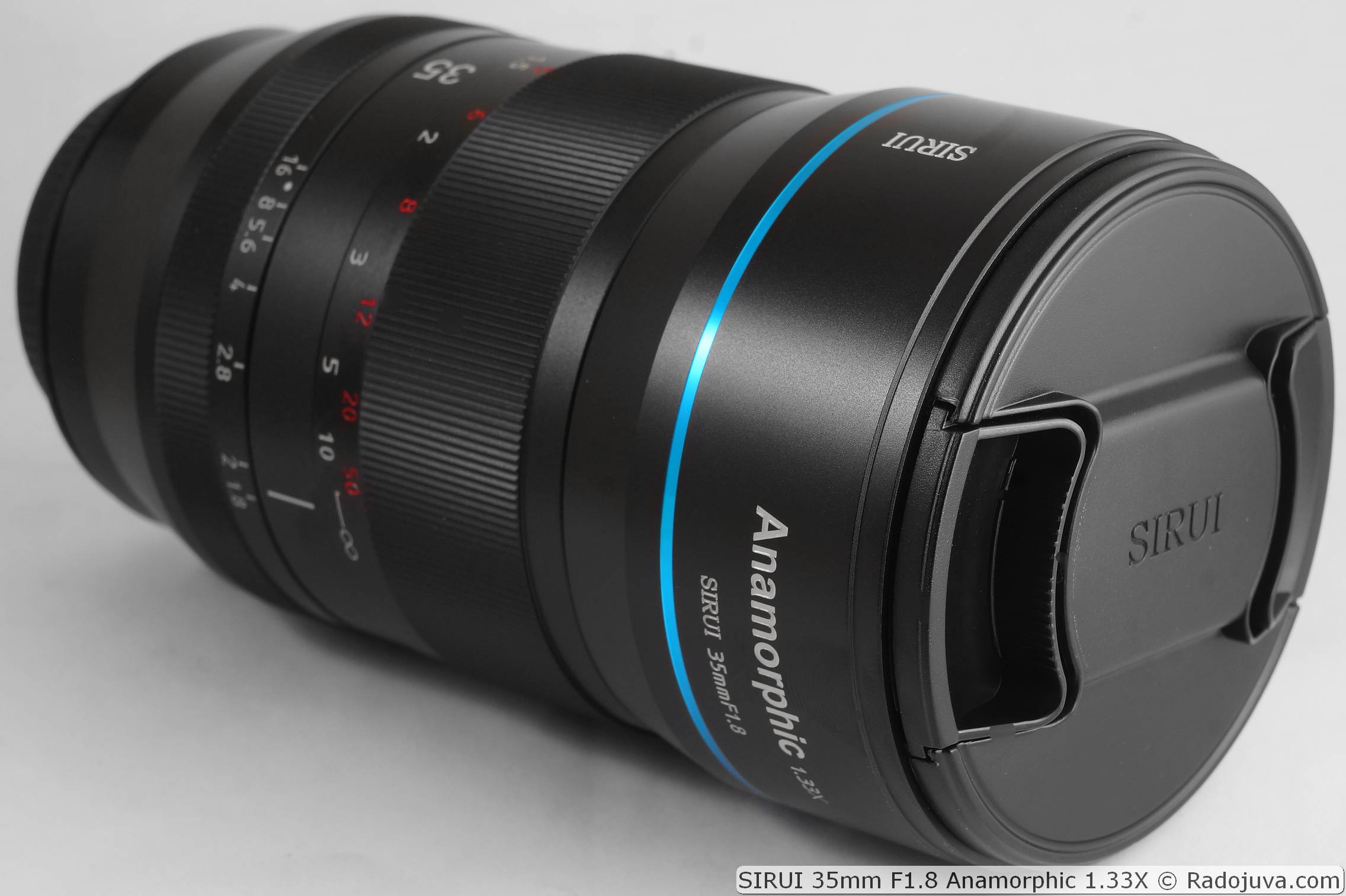
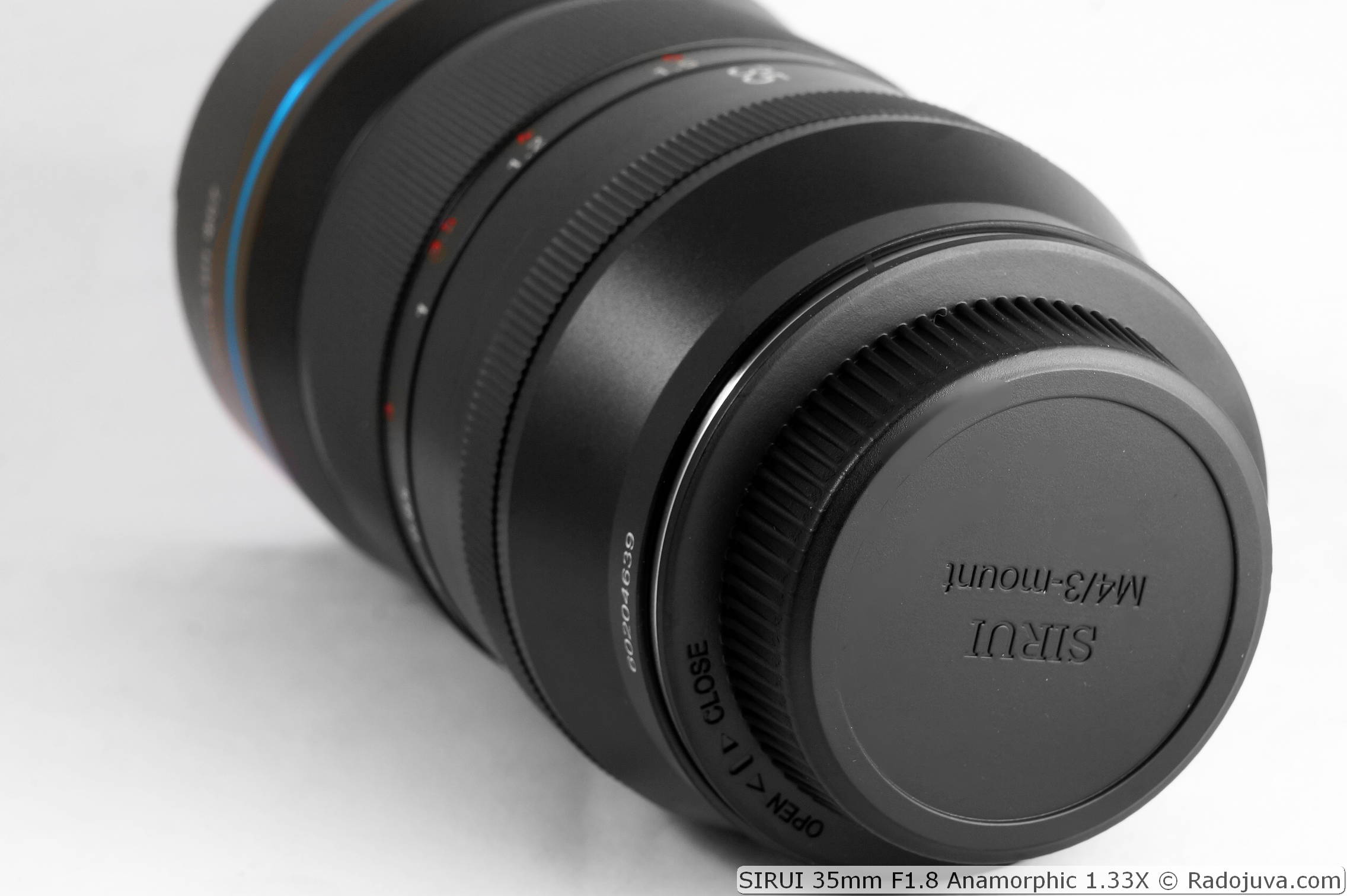
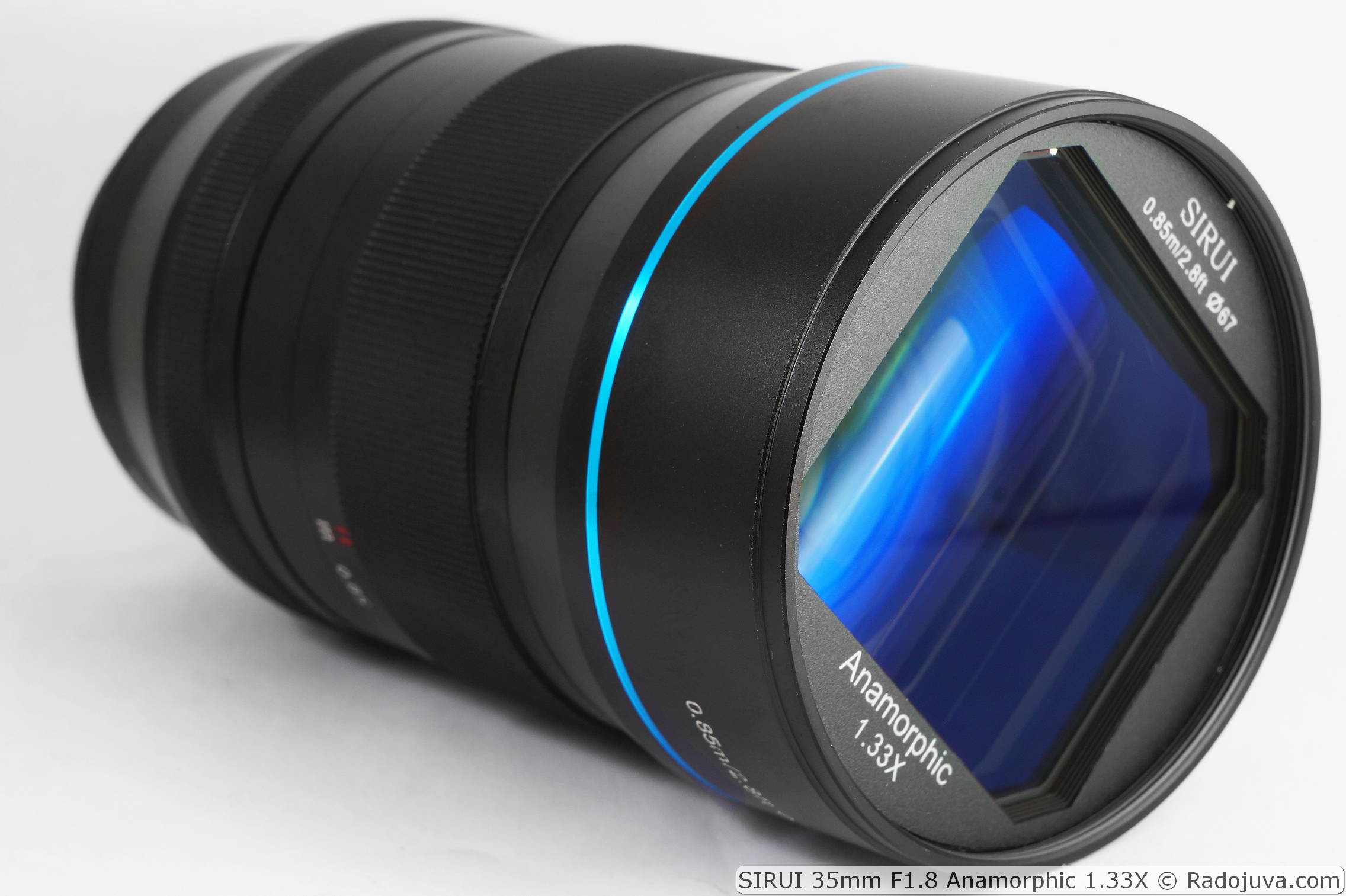
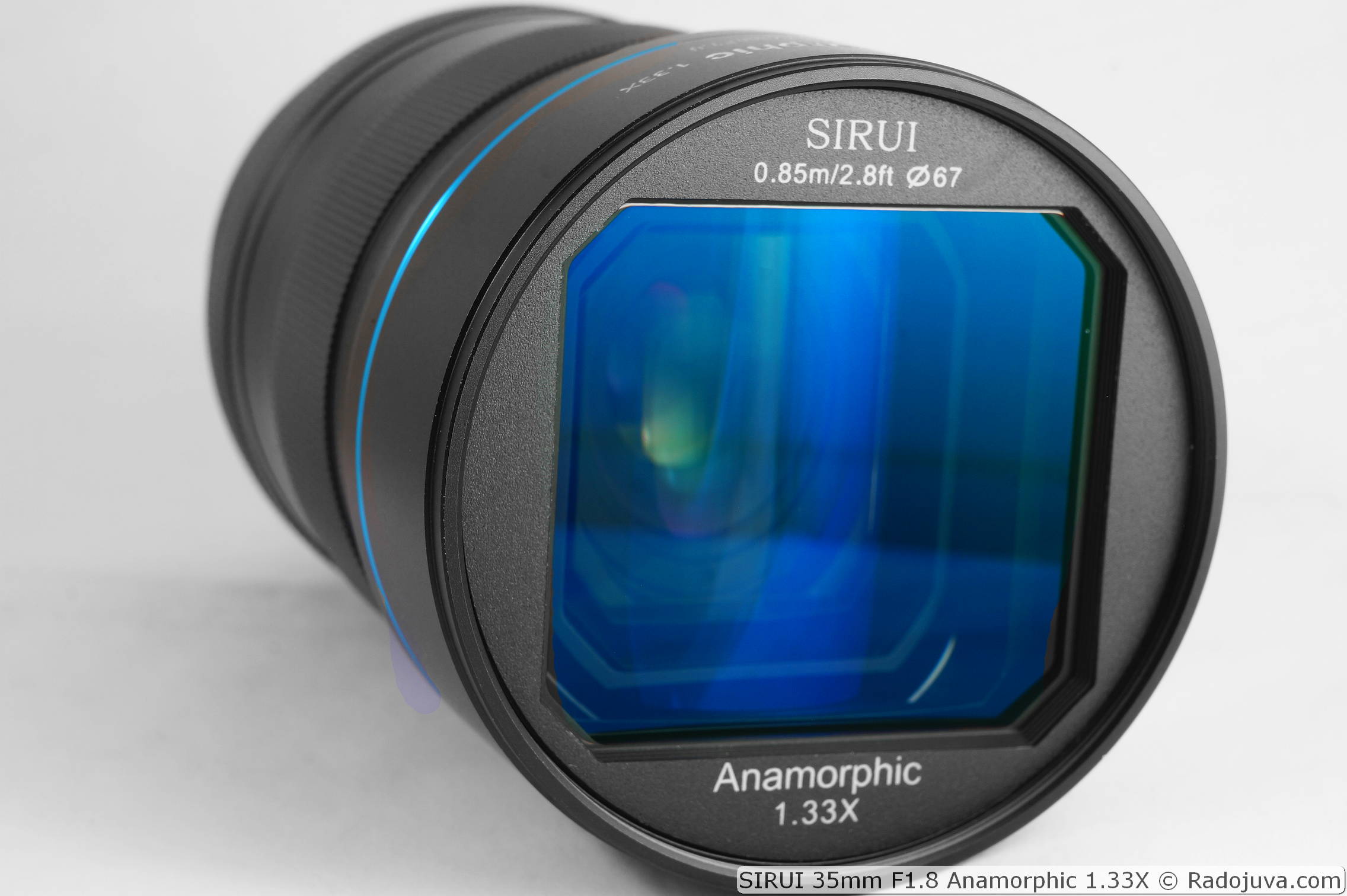
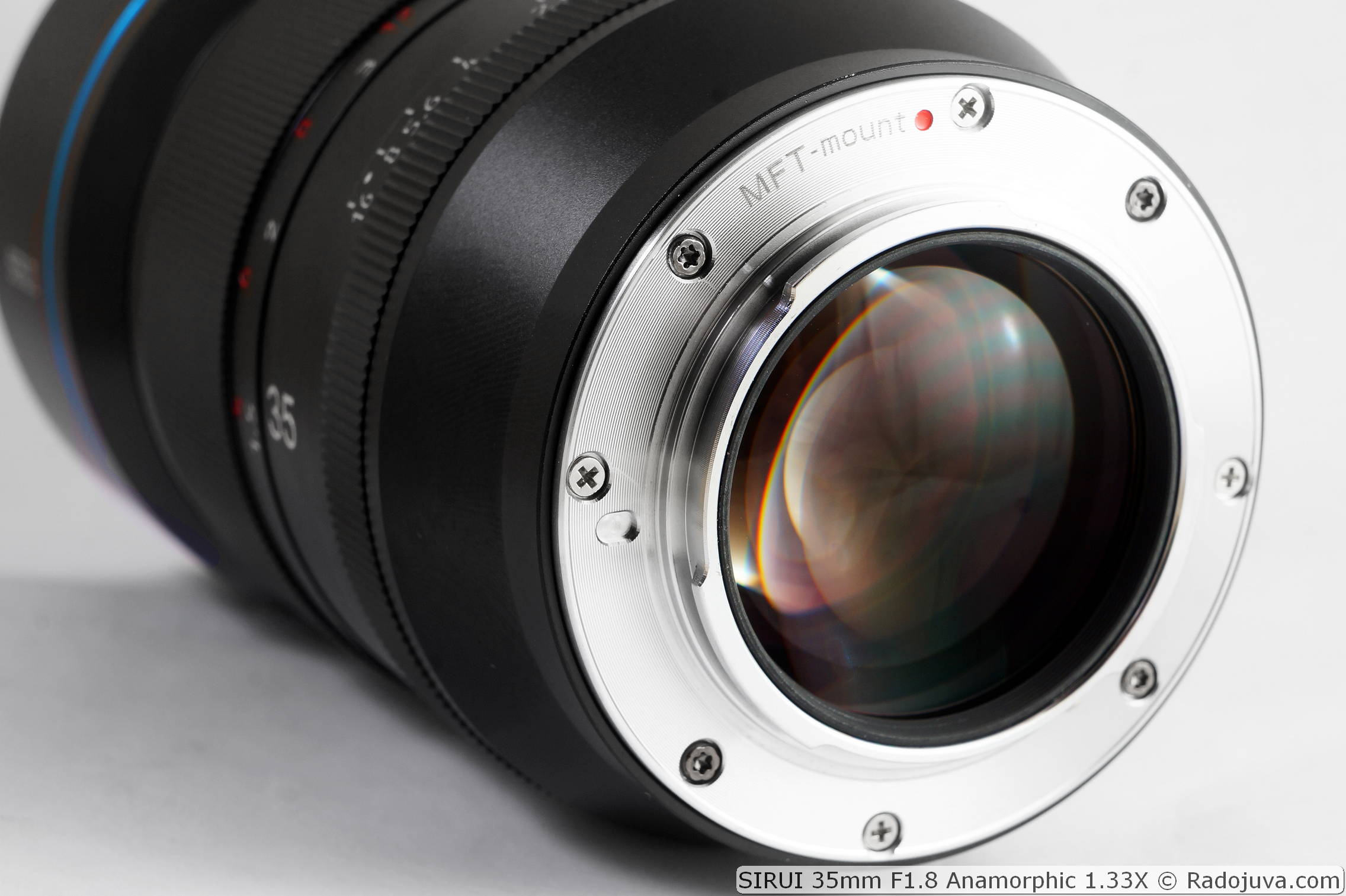
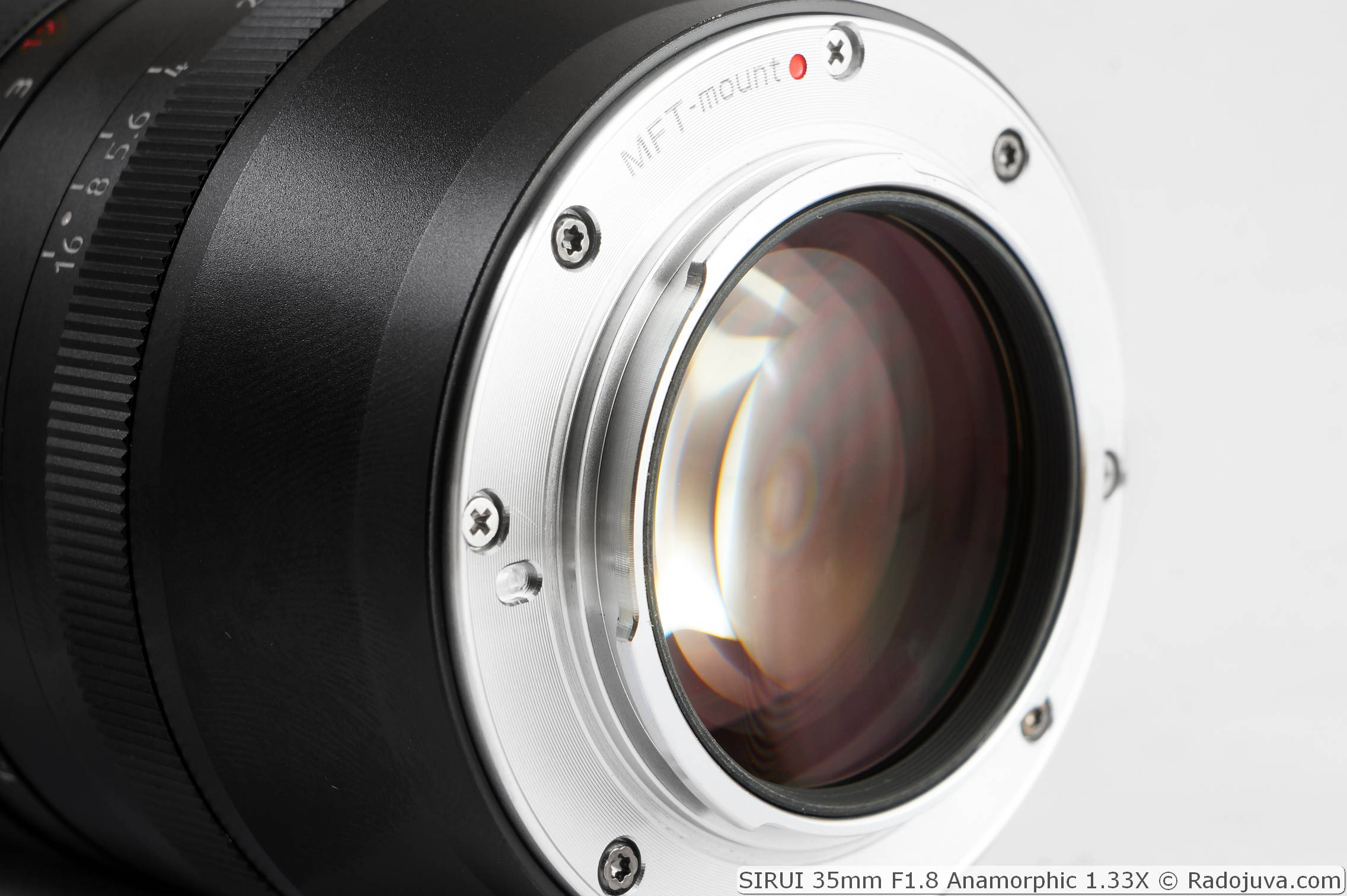



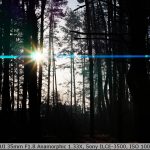
















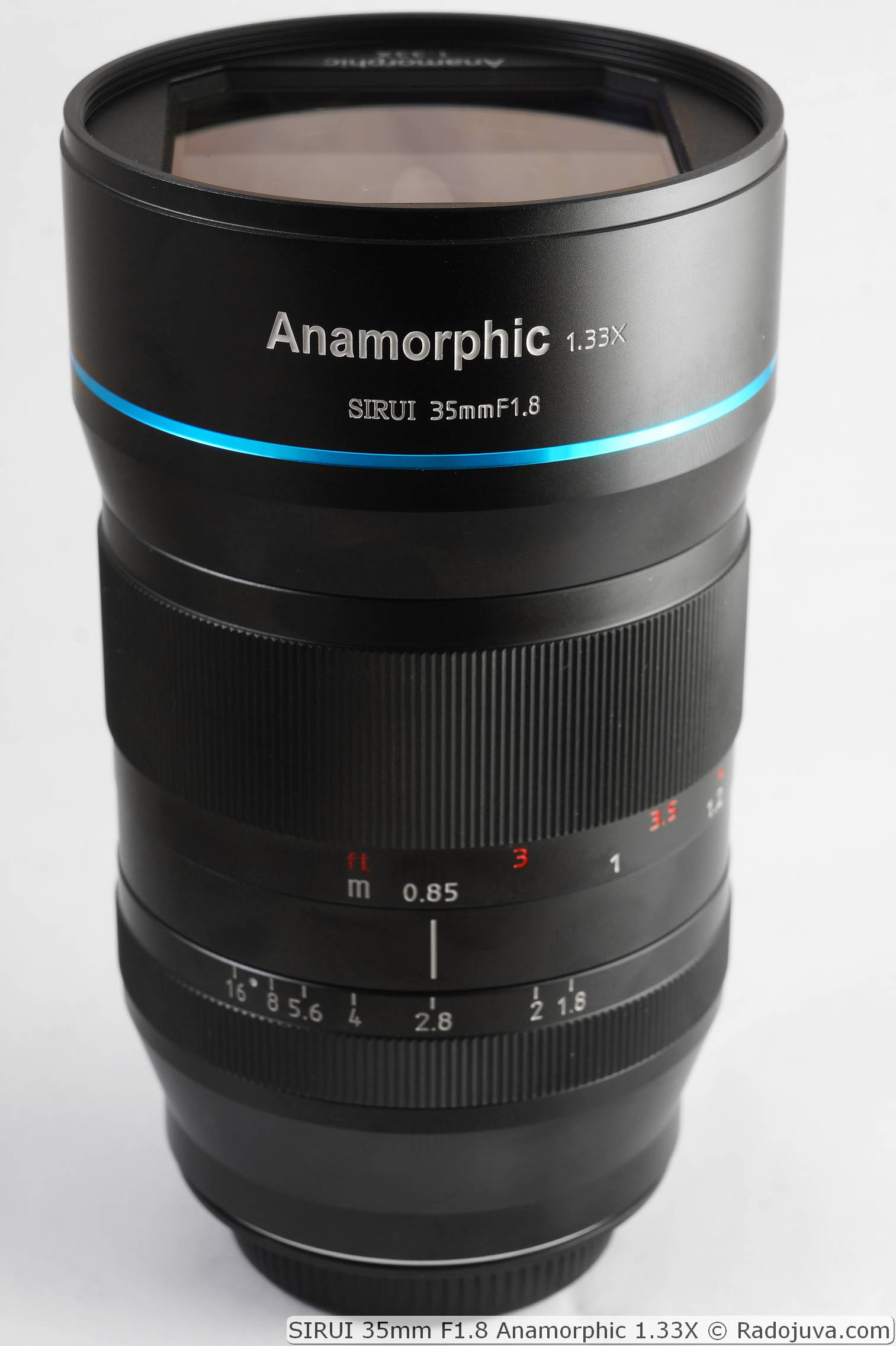
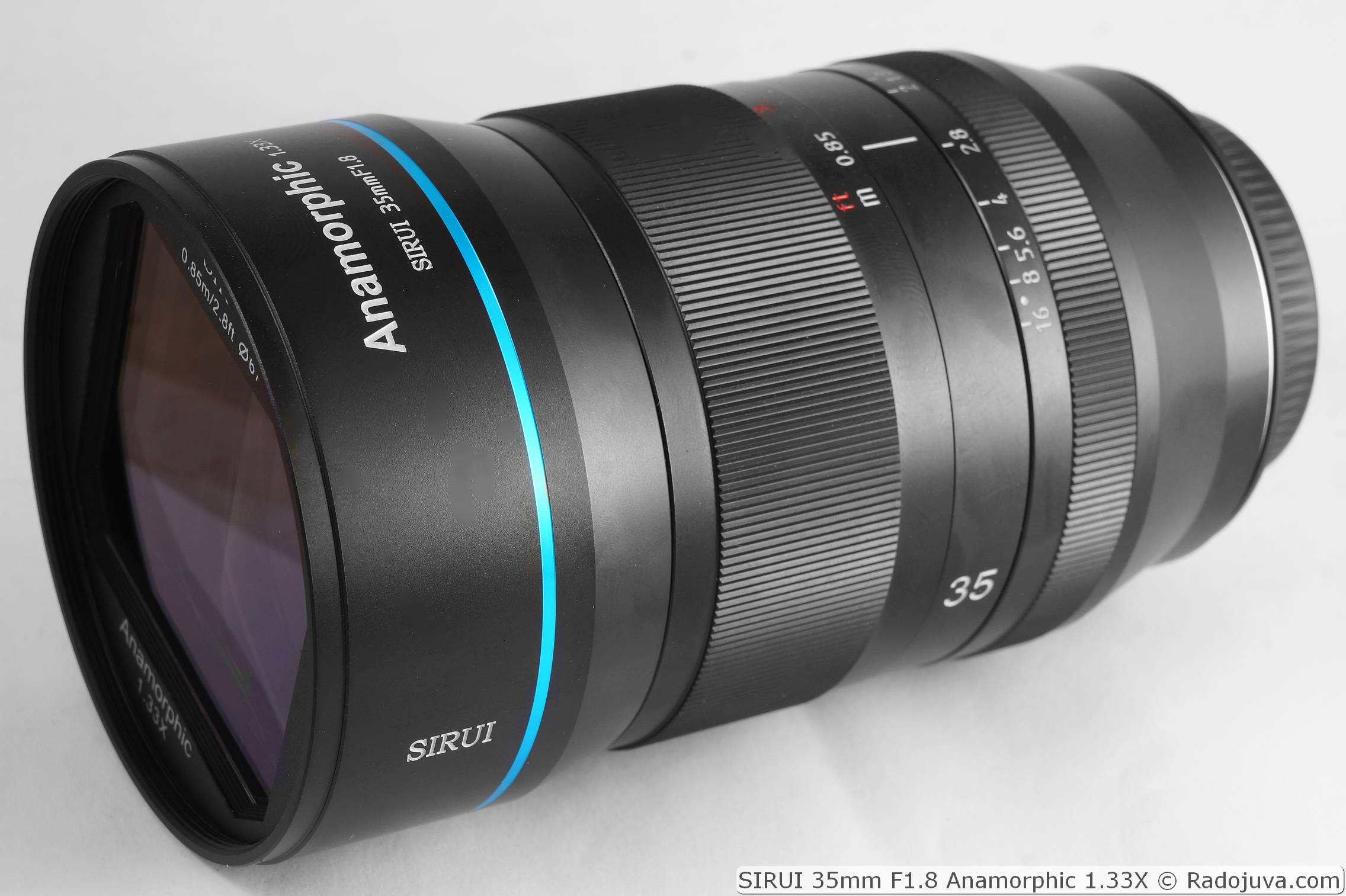
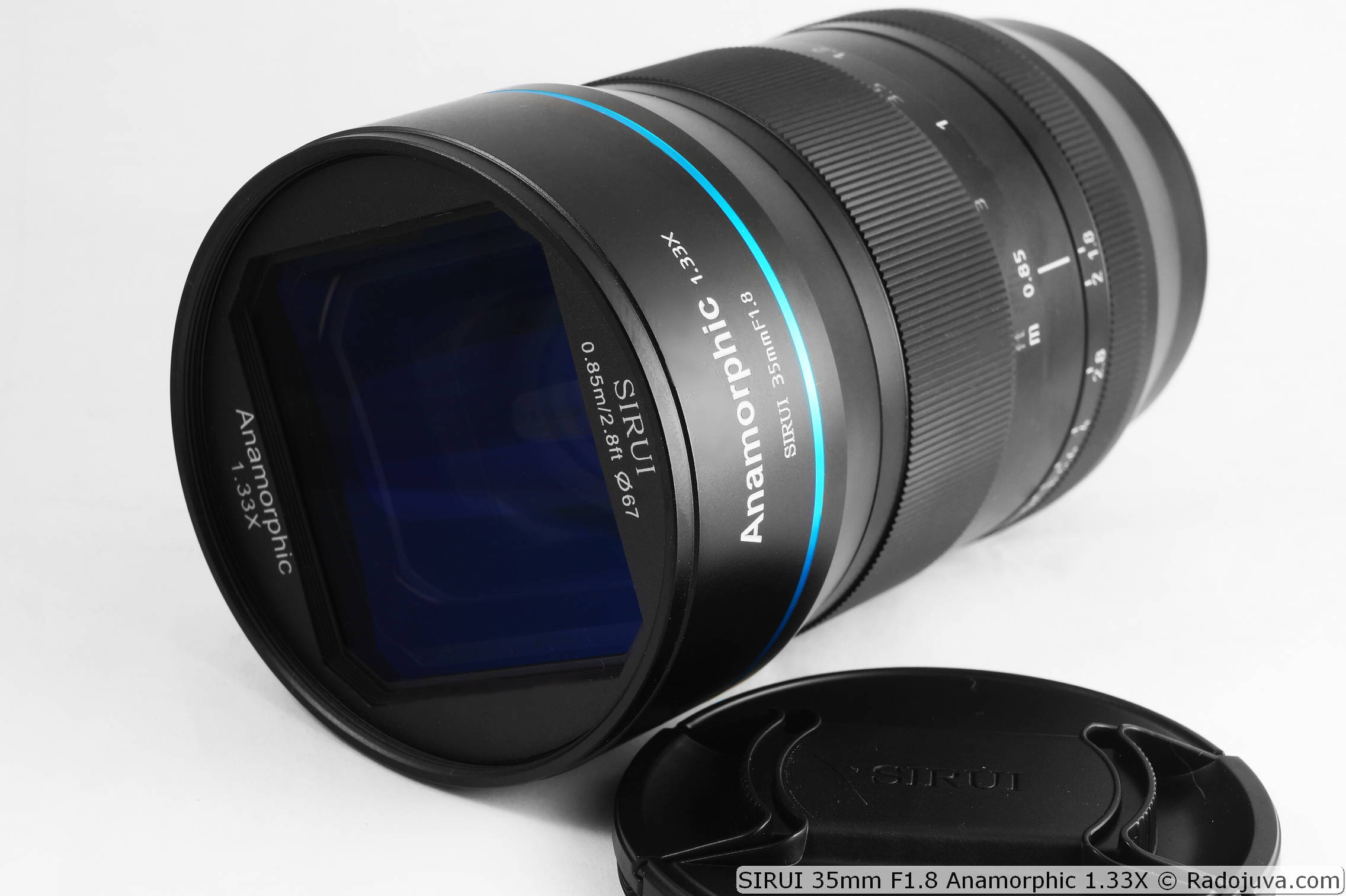

Very airy frame with pine trees and sun stripes. Shott glass is immediately felt)))
Tsikavy objective. Just forgot to explain on your fingers what is anamorphic, so don’t go google.
Google it in Yandex.
I don’t understand what is the use of it on the figure, why can’t you just crop it to the desired format?
In high-definition video, cropping will not work. Plus, again, difficulties with controlling the depth of field and all that ... Agree, some things would not be done if they were not useful?
perspective compression, bokeh will be lost. If with 35th it is not very noticeable, then with 50mm + it is already significant + glare + many cameras do not have enough margin for crop. Etc. etc.
it really makes no sense
especially infuriates MDF on such
conclusion - not needed!
Yes, MDF is almost a meter - this is nonsense.